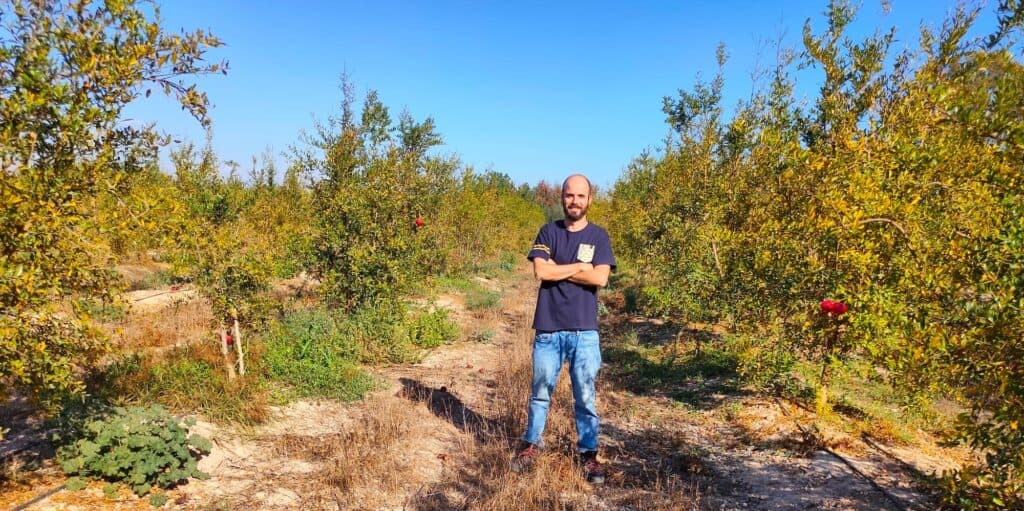MEMO ON POMEGRANATE
✓ Appreciated for its bright red color and sweet and tangy flavor, the pomegranate has been consumed since antiquity in Mediterranean regions. It is also found in China and South America (Chile, Argentina…).
✓ It grows on trees called pomegranate trees, from August to December. Each pomegranate can contain up to 400 seeds enclosed in “cells.” This is where it gets its Latin name “granatus“, meaning “with many seeds.”
✓ Very rich in vitamin C and numerous antioxidants, it stimulates the immune system, is anti-inflammatory, antibacterial, and is closely studied in cancer research.
A Family Plantation
Dany’s family has been growing pomegranates since the 1980s in Sant Joan d’Alacant, a suburb of Alicante. This region is very sunny all year round and is considered the orchard of Europe. You can find subtropical fruits there, which usually grow far from us: avocados, mangos, loquats…
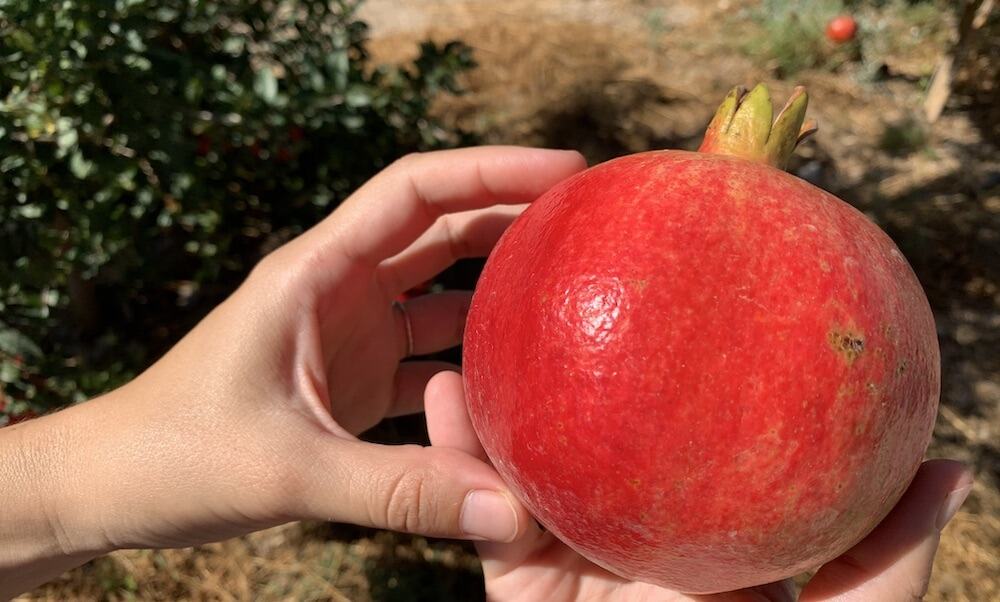
But it’s the pomegranate that interests us today! A fruit found on stalls from September to March, and sometimes even in cosmetics, and which can be very expensive. What do we love so much about pomegranates?
Besides its proven health benefits, it’s probably its bright red/pink color that has made it a star of healthy food in recent years. However, we’ll learn today that the best pomegranates are not the most colorful or “Instagrammable.”
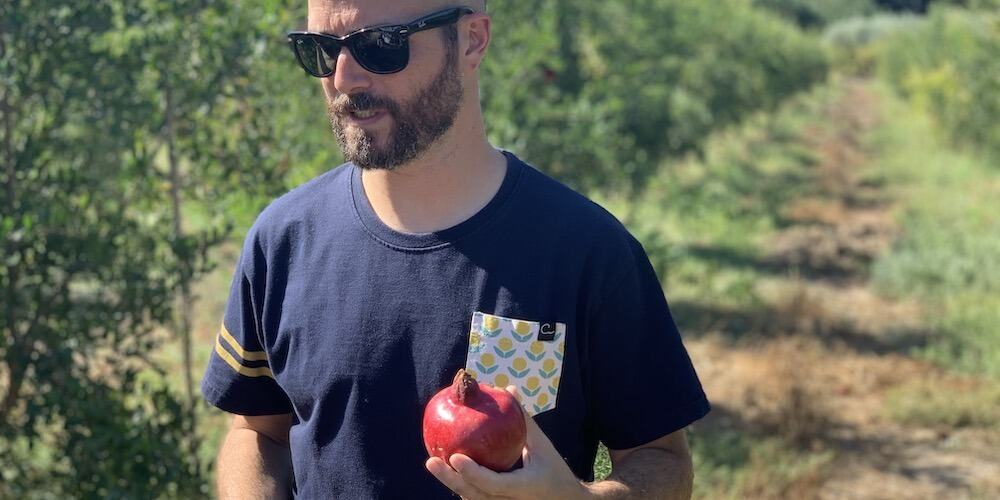
Dany welcomes us with his wife Marion under a blazing sun. After a PhD in Neuroscience in Paris, in search of a completely different and more tangible adventure, he decides to return to Spain and take the reins of the family farm. He cultivates several varieties of pomegranates, spread over 7,000 trees and about ten hectares.
There also grow olive trees, orange trees, carob trees… A small green cabin at the entrance serves for direct sales.

The variety most cultivated by Dany is a very sought-after, endemic variety that has been present in this region for 6000 years: the Mollar de Elche. It has a protected designation of origin, known here as D.O.P. It is unique for being free of acidity, and it adopts a bronze and yellow color instead of bright red, and its seeds are pearly pink.
Organic Farming Strategies
Three people work full-time on the farm. About 120,000 kg of Mollar de Elche are harvested per year. The pomegranate is a delicate fruit, which can experience water stress and suddenly lack water.

Drought is one of the major challenges of the plantation, knowing that it never rains in Alicante! We regularly flood the pomegranate trees with water from a nearby river.
“Pomegranate trees are shrubby plants: by planting branches, we can get fruit-producing trees by the third year. But we don’t harvest the fruits right away.“
Dany’s plantation is in conventional agriculture because even though he would like to go organic, he faces unsolvable problems with yield and aesthetic pressures on the fruits (organic pomegranates are “not pretty” and don’t sell well on the market).
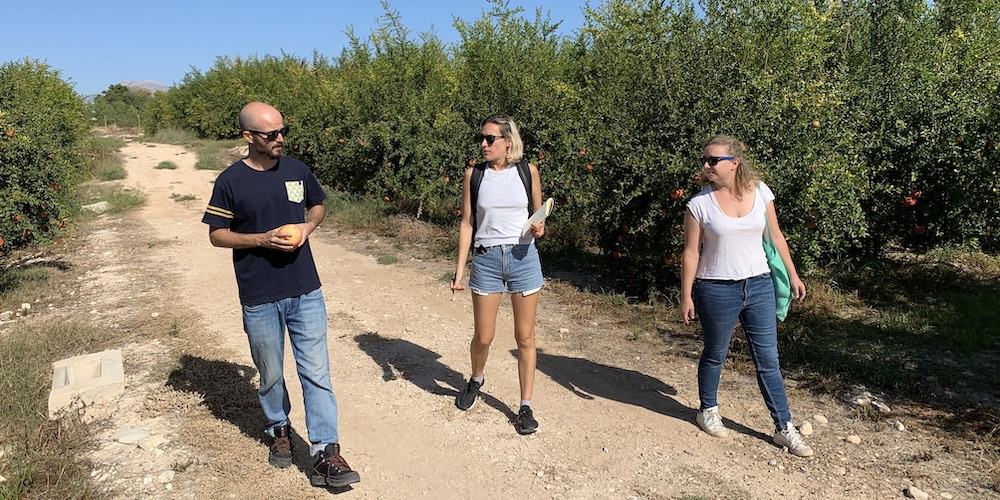
However, he uses strategies from organic farming. First of all, he relies on auxiliary fauna to protect his trees and fruits from insect predators.
“We release insects: lacewings and red wasps will eat midges, for example. They are more effective than ladybugs, which don’t linger!“
To reduce solar radiation and extend moisture, we use composting residues and herbaceous plants to provide a plant cover. The white clover used here interacts with the tree, structures the soil, attracts pollinators, and traps nitrates.
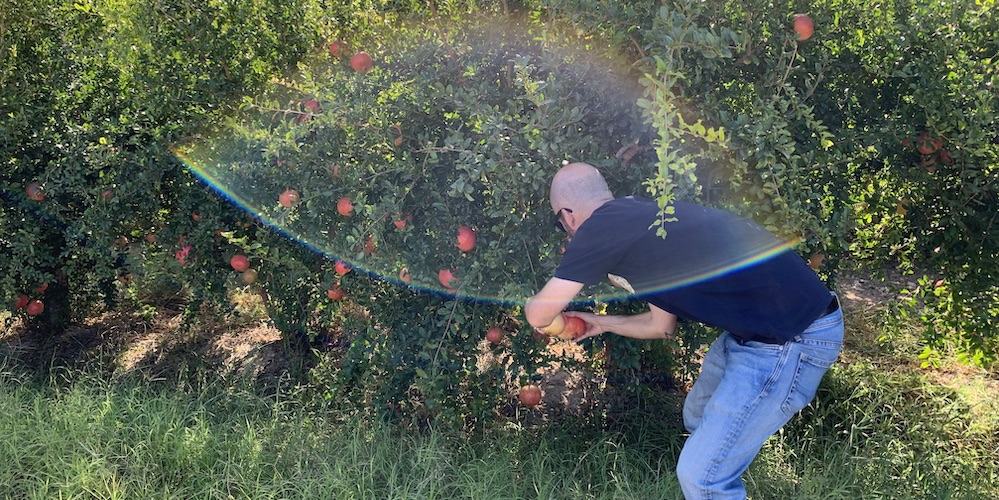
He also uses pheromone traps to control pest development. These traps are an indicator of the treatment to be performed: ecological, or if organic doesn’t work, pesticides must be used.
We even come across a hare’s burrow! But let’s take a closer look and taste the pomegranates.
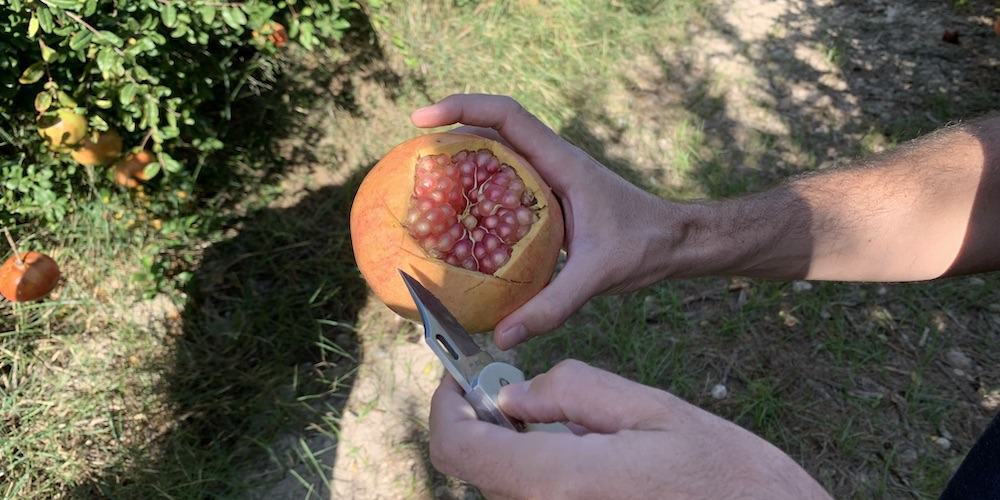

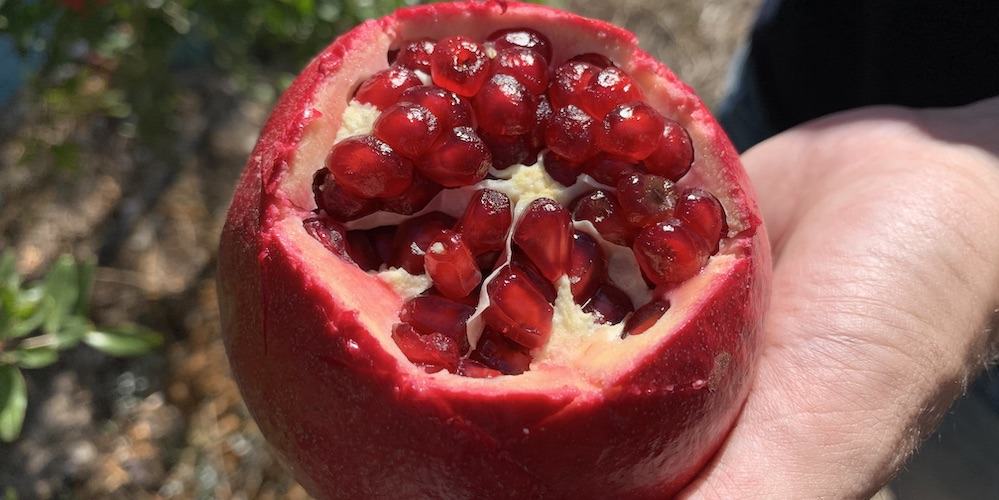
From the Field to the Laboratory
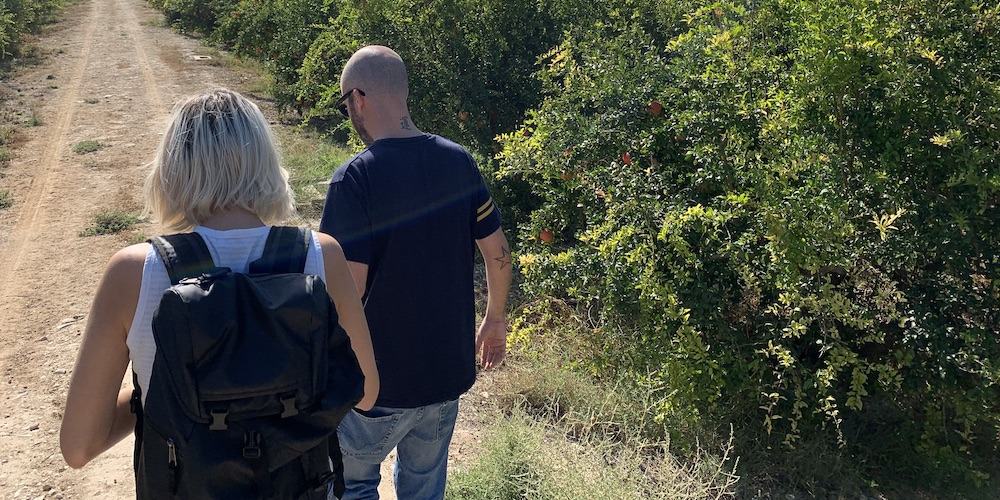
After 8 years of growing pomegranates, Dany has made several observations, leading him to find a more innovative path today.
“First, people don’t like peeling pomegranates. Then, a large part of the harvest, about 30%, is not valued and ends up as juice. Finally, I only earn 35 cents per kg harvested, and I can’t stand the way farmers are paid anymore.“
Utilizing his scientific background, he researched different ways to add value to his fruits, concluding that freeze-drying was the best opportunity.
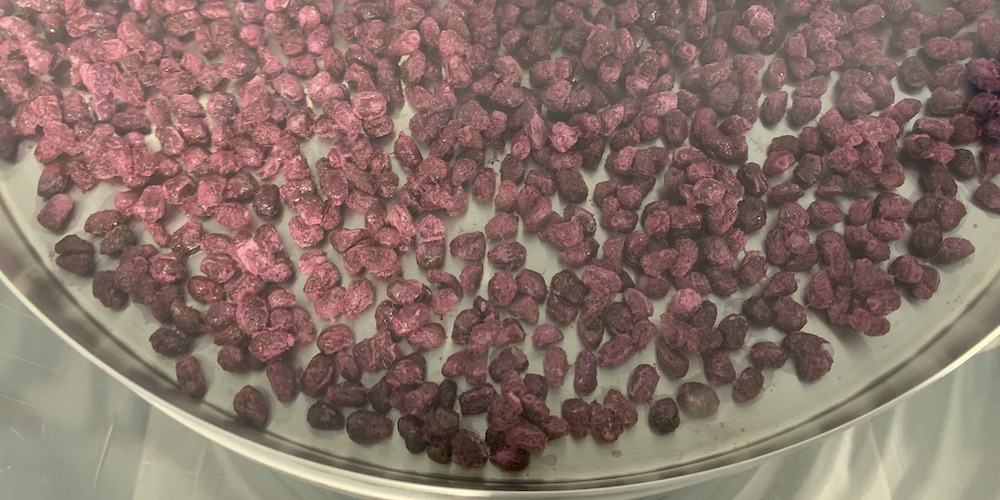
This low-temperature drying technique preserves all the nutrients and properties of the pomegranate (and there are many!), allowing it to be stored for a long time. And consumed throughout the year, in the most convenient way possible.
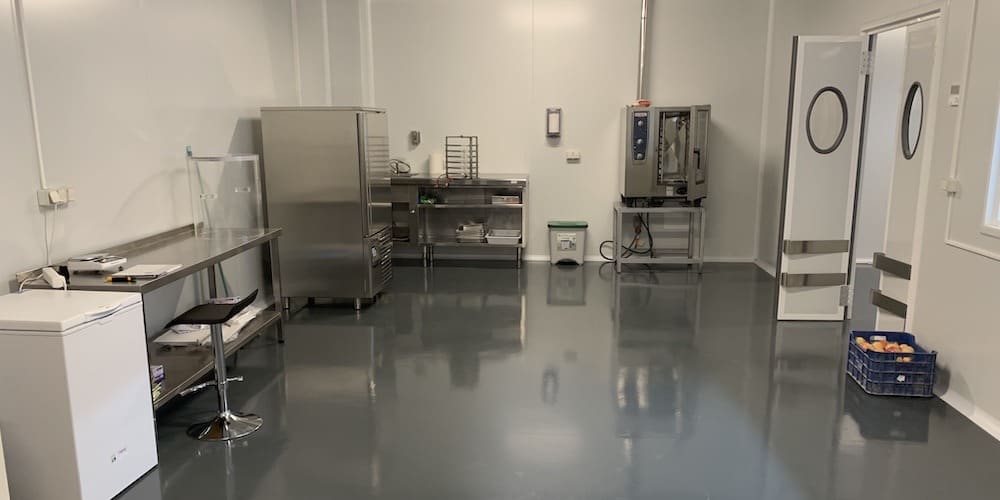
Dany has gathered local investors and just opened his own laboratory, in partnership with his sisters. They will proceed with the freeze-drying of pomegranate seeds, as well as apples, kiwis, raspberries, and other local fruits. They just launched their own brand, Integrana.
What an immense fortune to see how this wonderful fruit, the pomegranate, grows. We wish Dany and his family the best of luck with this very promising project 🙏🏻


